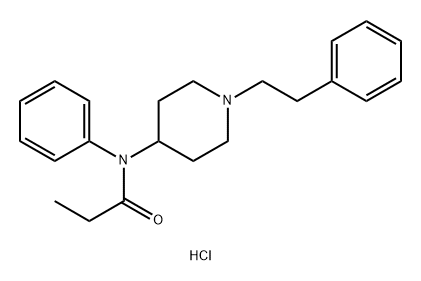1443-54-5

COMPUTED DESCRIPTORS
| Molecular Weight | 372.9 g/mol |
|---|---|
| Hydrogen Bond Donor Count | 1 |
| Hydrogen Bond Acceptor Count | 2 |
| Rotatable Bond Count | 6 |
| Exact Mass | 372.1968412 g/mol |
| Monoisotopic Mass | 372.1968412 g/mol |
| Topological Polar Surface Area | 23.6 Ų |
| Heavy Atom Count | 26 |
| Formal Charge | 0 |
| Complexity | 391 |
| Isotope Atom Count | 0 |
| Defined Atom Stereocenter Count | 0 |
| Undefined Atom Stereocenter Count | 0 |
| Defined Bond Stereocenter Count | 0 |
| Undefined Bond Stereocenter Count | 0 |
| Covalently-Bonded Unit Count | 2 |
| Compound Is Canonicalized | Yes |
PRODUCT INTRODUCTION
description
Fentanyl Hydrochloride is the hydrochloride salt form of fentanyl, a synthetic, lipophilic phenylpiperidine opioid agonist with analgesic and anesthetic properties. Fentanyl selectively binds to the mu-receptor in the central nervous system (CNS) thereby mimicking the effects of endogenous opiates. Stimulation of the mu-subtype opioid receptor stimulates the exchange of GTP for GDP on the G-protein complex and subsequently inhibits adenylate cyclase. This results in a decrease in intracellular cAMP and leads to a reduction in the release of neurotransmitters such as substance P, GABA, dopamine, acetylcholine and noradrenaline. The analgesic effect of fentanyl is likely due to its metabolite morphine, which induces opening of G-protein-coupled inwardly rectifying potassium (GIRK) channels and blocks the opening of N-type voltage-gated calcium channels, thereby resulting in hyperpolarization and reduced neuronal excitability.